When mounting your wheels you may have come across the term: Torque.
But how does torque work and what exactly is it?
Let’s find out!
Car wheel torque is the tightness of the lugnuts. This tightness is measured in an amount called foot-pounds. The foot-pounds are related to the amount of weight required to move an object a certain distance.
Depending on your car’s lugnut tightness, it can be set as high as 90 pounds or lower than 30 pounds.
Table of Contents
Check Also: Do electric cars have more torque than gas-driven cars?
Even wheel lug nut distribution helps the tires to stay balanced and even.
It helps ensure every part of the tire is holding up equal amounts of stress.
If you do not follow a specific pattern or technique for tightening your lug nuts, it can lead to wear on certain parts of the tire and uneven stress distribution.
There are several factors that you need to consider when using a torque wrench.
For example, you need to make sure that the wrench is properly calibrated, as this will affect the accuracy of the measurements.
A professional recalibration is necessary if the calibration is not accurate.
It is also important to check the condition of your lug nuts and other hardware before applying any torque, as they may be damaged or worn out and could require replacement.
Additionally, it is essential to use the correct amount of force when tightening your wheel lugs to prevent over-tightening or under-tightening them.
Finally, it is important to stay aware of any changes in conditions such as ambient temperature or humidity levels, which can impact how much force is required for proper torque settings.
The vehicle manual outlines what the torque of car wheel nuts should be.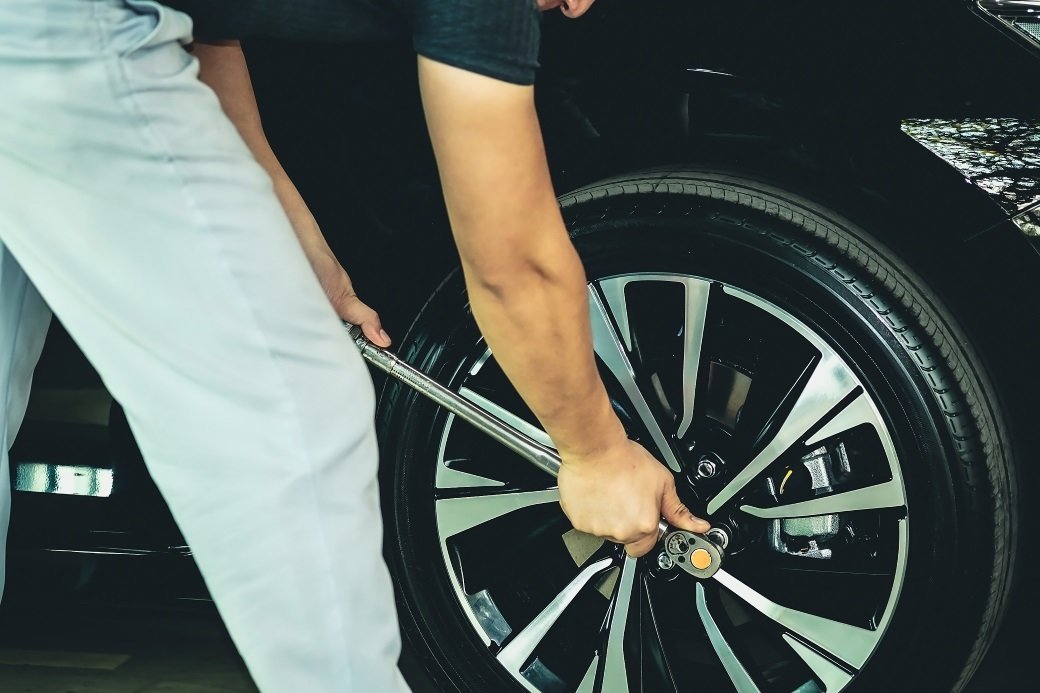
However, as a rule of thumb, most car wheel nuts should be torqued to between 80 and 110 foot pounds.
Lug nuts are torqued according to a measurement called foot-pounds. The torque you use depends on the size of the lug nuts.
Lugnuts that are 7/16 inches should be torqued 70 to 80 foot-lbs.
1/2 inch 75 to 85 torque pounds, and 9/16 inch 135 to 145 torque pounds.
A torque wrench or torque stick helps you to get the ideal torque.
It is important not to overtighten the wheel nuts, as this can damage the wheel or the threads on the nuts.
Under tightening the wheel nuts can also be dangerous, as it can cause the wheels to come loose while driving.
When tightening the lugs, be sure they are free from oil or grease.
The best way to ensure that you have the correct torque for your car’s wheels is to consult the owner’s manual.
Each car model has different specifications, and it is important to adhere to these in order to maintain optimal performance and safety.
If you are unsure about how to properly use a torque wrench or other tools, it is best to bring your vehicle to a professional mechanic who can help you adjust the settings as needed.
The amount of torque that your car’s wheels need will depend on a variety of factors, including the size of the tires, the type of material they are made from, and the weight of the vehicle.
It is important to consult with a professional mechanic or an experienced driver in order to determine the optimal setting for your particular car model.
With proper care and maintenance, you should be able to achieve optimal performance from your vehicle while also keeping yourself safe on the road.
Yes, it is possible to overtighten your car’s wheel nuts. This can damage the wheel or the threads on the nuts, and it can also make it difficult to remove the nuts in the future.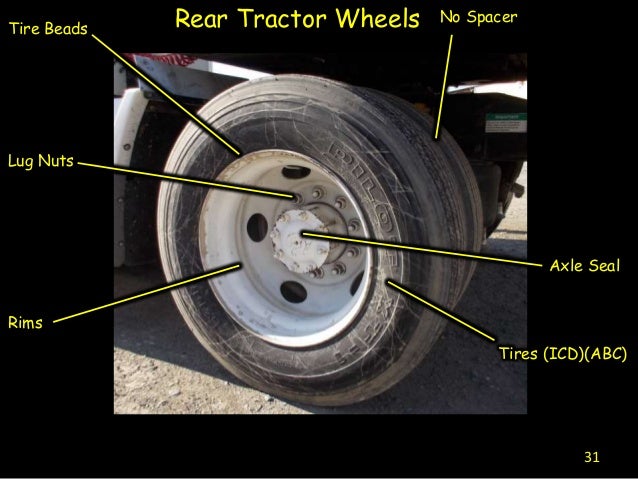
To avoid over-tightening your wheel nuts, it is important to follow the manufacturer’s specifications for torque carefully.
Additionally, it is a good idea to periodically check the torque on your wheel nuts, especially if you are driving in conditions that can lead to increased vibration or stress.
Torquing new wheels is important as the wheels adjust to the car.
The general rule is to torque your new wheels after the first 50 miles or 100 miles.
If you drive in adverse conditions, such as on dirt roads or in heavy rain, it is a good idea to check the torque more frequently.
Overtightening leads to stretching the wheel studs. These are the metal posts or bolts the wheel is attached to.
Due to this stress, the stud may potentially break. This breakage may lead to tire damage. Also, it could strip the bolts. There is even the potential that the brake rotors could warp.
Brake rotors may be affected by too much torque. The shaking caused by the vehicle potentially damages the entire brake system.
In addition, the vibration caused by an over-tightened wheel could even damage other parts of the car or loosen it up.
This can impact how effectively your vehicle is able to brake and steer, putting you at risk of accidents on the road. It is therefore important to make sure that your wheels are properly torqued to avoid these risks.
If a car has too little torque, it can impact its performance on the road. It will affect the balance and performance of the wheels.
They may wobble, which causes issues for the entire car.
The vehicle may not be able to accelerate or brake effectively, which can lead to collisions or other accidents.
Additionally, car parts such as the wheels and brakes may become damaged over time due to lack of proper torque, potentially increasing repair costs.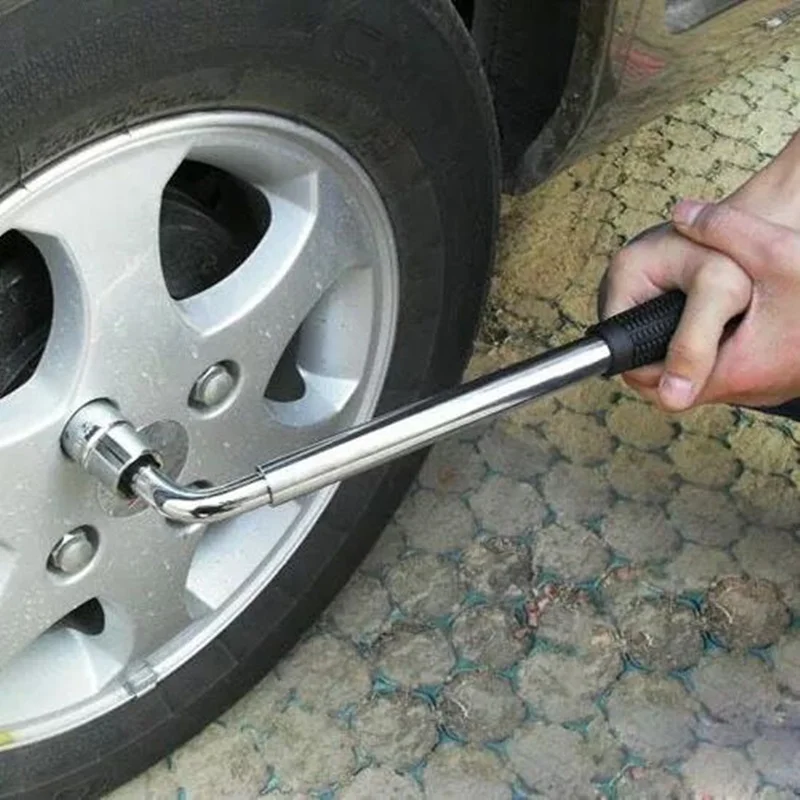
It is not recommended to use an impact wrench to fasten your car’s wheel nuts. This can damage the threads on the nuts or strip them completely.
It is best to use a torque wrench or a torque stick when tightening wheel nuts, as this will help you achieve the correct amount of torque.
There is no set frequency for checking the wheel nut torque, as it will depend on a number of factors, including how often you drive and what type of road conditions you typically encounter.
Some experts recommend checking the torque at least once a year, or any time that you change your tires or perform other routine maintenance on your vehicle.
If you notice any signs of damage to your wheels or wheels nuts, such as excessive wear or vibration when driving, it is important to bring your car in for an inspection right away.
With regular care and attention, you can help ensure optimal performance from your vehicle while also keeping yourself safe on the road.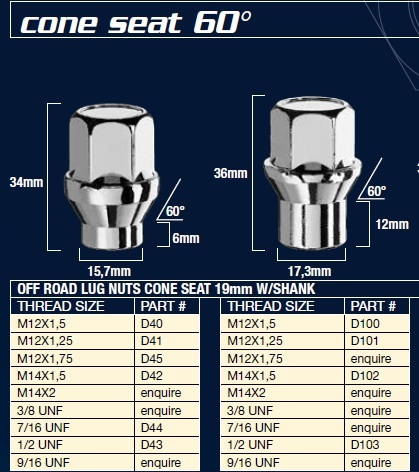
Yes, mechanics should always check the wheel nut torque when servicing a vehicle.
This is because the correct amount of torque is necessary for the wheels to function properly and safely.
If the nuts are not correctly torqued, it could lead to problems such as difficulty steering, increased wear and tear on the tires, and decreased performance overall.
In some cases, it may even be dangerous to drive with improperly tightened wheel nuts.
There are a number of different tools that mechanics can use to test the torque of a car’s wheel nuts. These might include specialized wrenches or digital torque gauges, which are connected either directly to the nuts themselves or to the car’s computer system.
The exact method used will depend on the type of wheels and other parts that your vehicle has, as well as its make and model.
However, most mechanics will start by loosening each nut just slightly and then testing it with a torque wrench or gauge to determine what setting is required. Adjustments may need to be made several times before an accurate reading can be obtained.
Once this has been done successfully, the mechanic will then tighten each nut back up again according to the specified torque.
It is important to note that not all mechanics will have the same equipment or experience when it comes to testing wheel nut torque.
The right torque is important because it helps your car’s wheels to function optimally. It ensures that the wheels are properly attached to your car, allowing you to safely accelerate, steer, and brake.
It affects things like steering, handling, and braking, and can even affect the safety of your vehicle.
Without the right amount of torque, your car’s tires may not perform properly or could even become damaged.
For this reason, it is essential to make sure that your wheel nuts are fastened to the correct torque settings at all times.
Without the right amount of wheel torque, your car may not perform as well or be as safe on the road.
https://itstillruns.com/proper-torque-wheel-nuts-7356894.html
https://www.tirerack.com/tires/tiretech/techpage.jsp?techid=107
Was this article helpful?
Great!
Click to share...
Did you find wrong information or was something missing?
We would love to hear your thoughts! (PS: We read ALL feedback)
Name (not required)
Email (not required)
Message
 com
comI’ve been a mechanic for over twenty years, and I use my torque wrench many times a day. If you buy a good one, you won’t ever need to buy another.
A 1/2 inch torque wrench with a working range of 30 to 160 ft. lbs. is the correct size tool for lug nuts and other heavy fasteners.
Torque wrenches are not just for the Pro. The days of tightening a nut or bolt by feel or guessing are over.
The cost of these type specialized tools have come way down, so now it makes sense to own one. Especially as some of you may know, that sickening feeling when you over-tighten a bolt, pull the threads, or break the bolt.
Repairing that kind of damage can be expensive and soul-destroying. I still remember the taste of my medicine. Anyway, here’s a link to my favorite 1/2 inch Teng torque wrench you might find useful. It links to Amazon, and truthfully I was surprised at the price. I paid more than this for mine many years ago.
There are a number of important factors to consider when choosing a torque wrench, but the most important consideration – What range do I need? The torque range of the wrench will dictate the drive size. 1/2 inch is pretty standard for larger fasteners like automotive and truck lug nuts.
1/2 inch is pretty standard for larger fasteners like automotive and truck lug nuts.
A torque wrench won’t be accurate at the very top or bottom of its range, so bear that in mind when choosing your wrench. You’ll need about 10 ft. lbs. to spare. Common torque wrench drive sizes include 1/4, 3/8, 1/2, and 3/4 inches. All have different applications.
The 1/4 and some 3/8 inch drive wrenches will be measured in inch lbs., not ft. lbs… They’re designed for lighter fasteners requiring less torque. (12-inch lbs. is equal to 1-foot lb.) The 1/4 inch drive torque wrench is used for very light fasteners, like interior trim, control module covers, etc.
The 3/8 drive is perfect for engine work like timing belt assembly, front covers, water pumps, cam covers, oil pans, etc. The 1/2 is ideal for heavier type fasteners like lug nuts, suspension, steering, engine mounts, etc.
The 3/4 isn’t used in automotive. It’s reserved for oversized fasteners found on large vehicles like Semi and earth-moving equipment, etc.
Most automotive lug nuts are tightened to 90 – 120 ft. lbs… Trucks will be more, about 120-150 ft. lbs. range.
If you’re running a truck, consider buying the 1/2 inch larger wrench with a greater working range of 30 to 250 ft. lbs., you’ll find plenty of other uses for the greater range.
As a mechanic, I know what I want in a torque wrench. Here’s a bulleted list of what’s important to me.
Understandably, a feature like an angle measuring head may not be important to the occasional user. It likely won’t be used unless you undertake larger repair jobs like replacing a head gasket.
While you already know the value of using a torque wrench, some people might say it’s not strictly necessary to torque your lug nuts.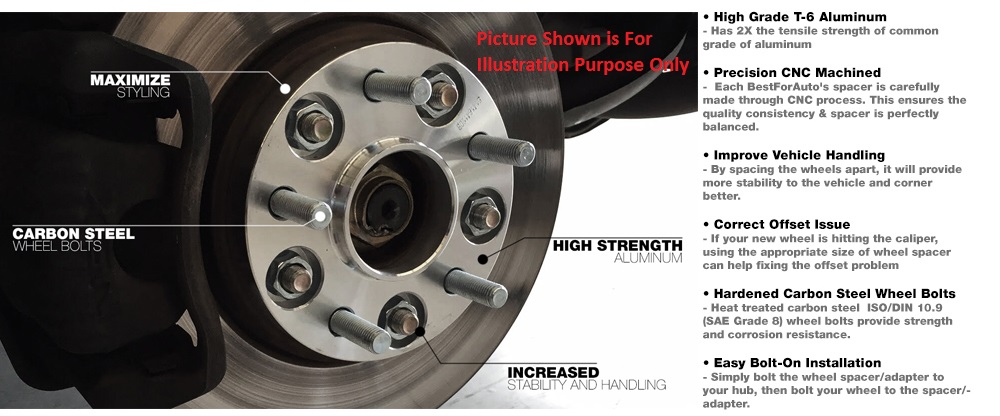 I don’t agree.
I don’t agree.
Sure it’s OK in an emergency to tighten your lug nuts using your car’s wheel changing kit, but I advise calling a tire shop and have them back off the wheel lug nuts and torque them to spec.
And here’s why – Most vehicles will use the tension of the wheel rim against the hub to keep the brake rotor aligned. If the wheel lug nuts are torqued out of sequence and to different specs, it’s possible to cause the rotor to have run out (wobble).
This will only be slight but can cause vibration, pulsing in the brakes, road-noise, the brake rotor, and pad damage. When torquing a wheel, Snug all lug nuts down first before using the torque wrench. Then tighten in a star formation. This helps the wheel, Rotor and Hub align squarely.
I’ve had my Teng wrench for a few years now. It gets calibrated every year, and I’ve never had a problem. It’s not an ornament. It’s used heavily but still performs and looks good. I’m happy to recommend it.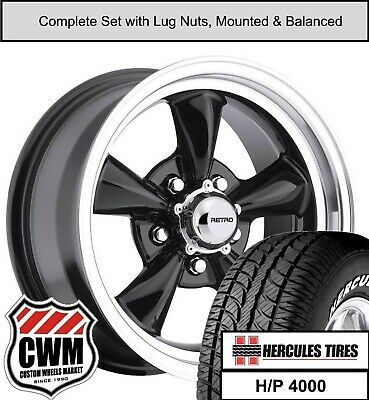 It’s a good kit.
It’s a good kit.
Here’s why I love it – First off, it’s made of alloy – no plastic bits to break. The measurement scale is in ft. lbs… On the opposite side, it’s measured in Nm. The scale is stamped into the barrel, so it’s not going to wear away, and I can read them clearly.
The ratchet head has a degree measurement tool built in. Traditionally this would be a separate tool altogether. You’ll use this feature when torquing down cylinder head bolts on cars or trucks. The spec sheet might say, torque the head bolts to 100 ft. lbs. and on the 2nd pass, torque to 90°.
Comes with a solid plastic case and a detailed instruction sheet. The Teng torque wrench comes with a lifetime warranty. I like how the Teng 10-150 ft. lbs. feel. It’s a quality tool. You can tell by holding it. You’ll notice how confident and definite the action is. When it reaches the set torque, it clicks clearly.
If you need a greater torque range, this Teng wrench covers 25-250 ft. lbs… It’s the same quality wrench.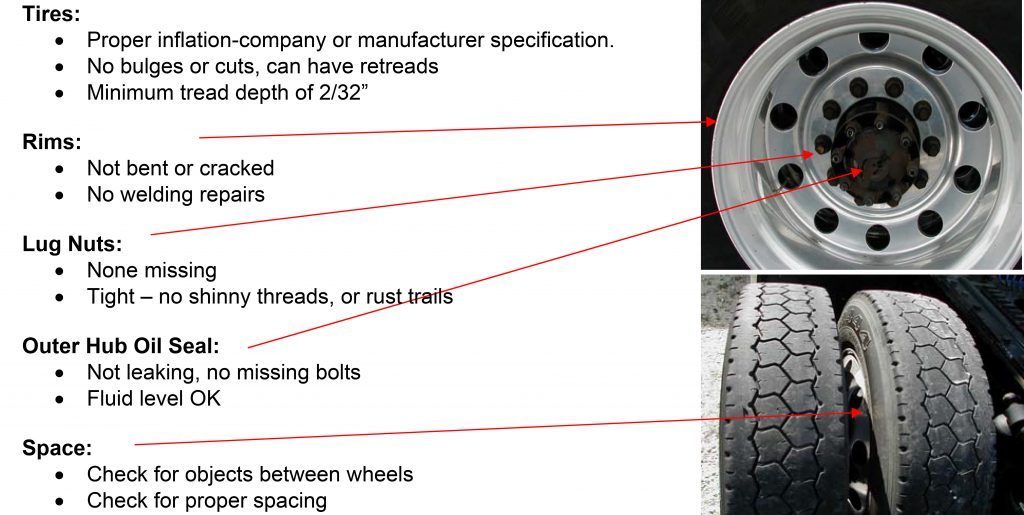
Your torque wrench is a precision tool and should be stored in its molded case, it will arrive with full instructions, but it isn’t difficult to master. You can use regular 1/2 sockets; however, you’ll find deep sockets work best on lug nuts.
If you’re very particular about your wheel rims, get a set of ABN non-scratch 1/2 inch impact sockets.
This is a precision bit of kit. Dropping it on the ground like you would a hammer is going to knock it out of calibration. Although the torque wrench is not unlike a ratchet, it’s not a ratchet. I don’t use it to open bolts, only tighten to spec.
Dropping it on the ground like you would a hammer is going to knock it out of calibration. Although the torque wrench is not unlike a ratchet, it’s not a ratchet. I don’t use it to open bolts, only tighten to spec.
I clean mine every use, store it on a shelf where I can grab it real fast. Come winter. I’ll spray it with WD40 and keep it in its hard case to keep moisture off it. You may want to store yours in the trunk. If so, store it securely.
Best to return the Torque wrench to the bottom of the scale range when it’s not in use. This relieves the tension on the components. The tool requires calibration every year when working it professionally, but as an occasional user, you won’t need to.
You can check out all the tools I use, including a torque wrench and workshop manuals, here on the Mechanics tools page, or check out the Amazon link below.
Amazon Mechanics Torque Wrench
How many pounds of torque do I need to remove lug nuts? About 300 ft. lbs. of torque delivered by an impact wrench should be enough. More torque may be needed if the lug nuts are corroded or over-tightened.
lbs. of torque delivered by an impact wrench should be enough. More torque may be needed if the lug nuts are corroded or over-tightened.
Do I need a torque wrench? A torque wrench should always be used to check and adjust the wheels. Tightening by hand is OK, but the wheel should be torqued to specification as soon as it is practical.
If you’ve ever considered becoming a mechanic check out this post – Is it worth being a mechanic. And if you’ve ever wondered about rates of pay you can check out job vacancies and rates of pay here on Jooble.org.
You may find these posts useful:
How to change a flat wheel
Are wheel lock nuts worth it?
Unscrewing and tightening nuts is the main and easiest operation in a tire shop. Today, tire fitting masters have at their disposal a wide range of the most diverse technical equipment and tools to perform this unpretentious operation. For simple unscrewing and tightening of nuts and bolts, special wrenches are used, and to control the moment of tightening or loosening nuts and bolts, special torque wrenches are used. Sometimes it is necessary to use special torque amplifiers to loosen tightly tightened nuts, and special plastic indicators to control the possible loosening of nuts during driving.
For simple unscrewing and tightening of nuts and bolts, special wrenches are used, and to control the moment of tightening or loosening nuts and bolts, special torque wrenches are used. Sometimes it is necessary to use special torque amplifiers to loosen tightly tightened nuts, and special plastic indicators to control the possible loosening of nuts during driving.
The topic of loose nuts and wheels flying off while driving is often discussed in the automotive community. If this happens, the owners or officials of trucking companies begin to look for both the reasons for the loose nuts and the means to prevent similar occurrences in the future. In some cases, they have to simultaneously solve the inverse problem - the inability to unscrew the heavily tightened wheel nuts. It often happens that the driver wants to replace a punctured tire on the road with a spare tire, but cannot unscrew the nut with the available wrench. He is forced to call a special help service, which, especially abroad, is not a cheap thing. Therefore, the focus is on finding and monitoring the optimum wheel nut torque values, and on drivers checking the wheel nut tightening status after a certain distance has been traveled since the last tightening.
Therefore, the focus is on finding and monitoring the optimum wheel nut torque values, and on drivers checking the wheel nut tightening status after a certain distance has been traveled since the last tightening.
This is especially true for trucks, so the manipulations described below and the details of their implementation will be more related to trucks.
Repair of wheels always starts with unscrewing the nuts. The range of nutrunners is quite large: pneumatic, electric, on a transport trolley or manual.
Electric wrenches are always built on a transport trolley, which greatly simplifies the work of the personnel, since they do not have to carry extra weight from wheel to wheel. Pneumatic, if necessary, can be mounted on a trolley, but in practice they are usually used manually. The staff of tire repair shops says that in this way the necessary manipulations are carried out faster, although the master is forced to carry them out in a half-bent state.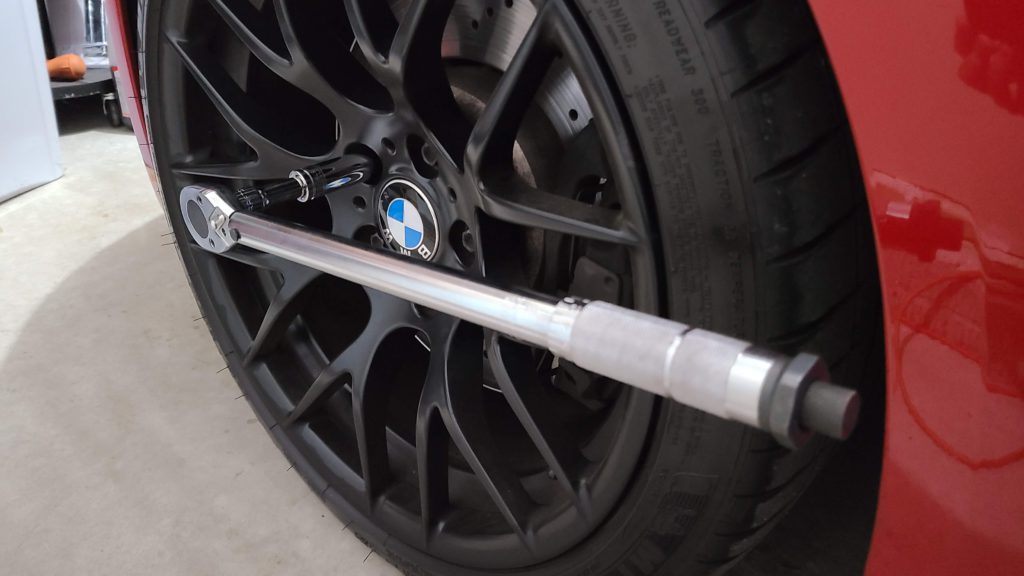
Truck wheel nut wrenches with an extended one-inch shaft, weighing approximately eleven kilograms. The designers of pneumatic tool manufacturing companies thought about this flaw and soon designed lightweight models that, although they do not weigh a full eight kilograms, make it possible to obtain a tightening torque (torque) with a force of 2100 Nm. The amount of torque is especially important when the nuts are too tight. In electric impact wrenches equipped with a flywheel impact mechanism, in general, there is no problem with loosening tight nuts.
On the other hand, when using pneumatic nutrunners, in which the amount of compressed air supplied is sometimes limited, trying to loosen tight nuts the first time may not always be successful. In such cases, to tear off tightly tightened nuts, special torque amplifiers will come to the rescue, which work on the principle of increasing power through a system of gears and a toothed rim. On the market, for example, there is even an amplifier with a gear ratio of 68:1.
It can be used not only in stationary workshops, but also in mobile ones, or used by vehicle drivers when changing a wheel on the road. Loosening and unscrewing the nuts is carried out around the circumference of the wheel. Unscrewed nuts are recommended to be stored in a pre-prepared box or in any other clean container to prevent contamination of the internal threads of the nuts. After unscrewing all the nuts, the wheel is freely removed from the vehicle hub.
In most modern cars, the discs are centered on the hub through a central hole with a minimum clearance of tenths of a millimeter. This method of fastening the discs is referred to as type M mounting. Rust can form in the minimum gap between the disc and the hub, causing the disc to stick to the hub. Therefore, a hammer weighing several kilograms is already needed here. Hammer blows should be applied to the sidewall of the tire, never to the rim of the rim. If the hammer does not help, you need to look for other methods (driving and turning on wheels with manually tightened nuts, hitting an obstacle). Such solutions are quite effective, but at the same time dangerous, since the bolts can be damaged and will need to be changed.
Such solutions are quite effective, but at the same time dangerous, since the bolts can be damaged and will need to be changed.
The professional solution is to use hydraulic pullers, which are divided into two types. The first type is fixed between the wheels on the same axle, and the second type is placed between the wheel and the vehicle frame. In both types, it is recommended to apply pressure in several places around the circumference in order to gradually loosen rusted joints. The advantage of the hydraulic puller is that at a pressure of 500 bar it develops a force of up to 10 tons.
Once the disk on the hub has been sufficiently loosened, the wheel must be removed from the vehicle. In order not to expend too much effort for this and not to damage the threads, the wheel should be removed using a handling trolley.
If the threads are damaged or dirty, the tightening torque may be distorted during subsequent tightening. This may create conditions for incorrect tightening. Therefore nuts and bolts should always be stored in a clean container. A convenient solution is a magnetic bowl that attaches directly to the lift bar. Bolts (studs), which are an integral part of the hub, must be cleaned mechanically with a wire brush or a special nozzle on a drill. Along with cleaning the threads of the bolts (studs), mechanical cleaning of the contact surface of the disk on the hub is also recommended. After that, the contact surface should be treated with a separating agent. The most commonly used copper paste or spray. It is recommended to apply a thin coat of lubricant to cleaned bolts (studs), which should help eliminate the aforementioned problems with tightening nuts. After processing the bolts (studs) and contact surfaces, the wheel is mounted on the bolts (studs) of the hub.
This may create conditions for incorrect tightening. Therefore nuts and bolts should always be stored in a clean container. A convenient solution is a magnetic bowl that attaches directly to the lift bar. Bolts (studs), which are an integral part of the hub, must be cleaned mechanically with a wire brush or a special nozzle on a drill. Along with cleaning the threads of the bolts (studs), mechanical cleaning of the contact surface of the disk on the hub is also recommended. After that, the contact surface should be treated with a separating agent. The most commonly used copper paste or spray. It is recommended to apply a thin coat of lubricant to cleaned bolts (studs), which should help eliminate the aforementioned problems with tightening nuts. After processing the bolts (studs) and contact surfaces, the wheel is mounted on the bolts (studs) of the hub.
Lightweight wheels can be lifted and placed on the vehicle axle by hand or with a mounting lever. Heavier wheels should be lifted and installed using various lifting mechanisms. A simple lifting mechanism is a lever-operated handcart that can be combined with stud caps to protect their threads.
Heavier wheels should be lifted and installed using various lifting mechanisms. A simple lifting mechanism is a lever-operated handcart that can be combined with stud caps to protect their threads.
These tips respond to possible loosening of the nuts, which can cause subsequent wheel wobble on the vehicle axle. Another lifting mechanism is a four-wheeled trolley with a pneumatic or hydraulic lift installed on it. Such a trolley lifts the wheel exactly to the height of the bolts (studs) and puts it on them without damaging their threads. The use of such carts greatly facilitates the hard work of a tire repairman.
It is very important to tighten the nuts correctly. While the loosening of the nuts is carried out in a circle, their tightening is carried out with an "asterisk", that is, crosswise in the indicated sequence. This method of tightening the nuts ensures even distribution of the disc pressure over the contact surface of the hub. In the case of tightening around the circumference, there is a great risk that part of the disk will be pressed much more strongly in one place than in the opposite side.
In the case of tightening around the circumference, there is a great risk that part of the disk will be pressed much more strongly in one place than in the opposite side.
During wheel operation, various vibrations can loosen the wheel nuts. After tightening the nuts, check with a torque wrench. The wrenches are selected according to the torque range as well as the available bits. The most commonly used wrench with a one-inch square. For trucks, the amount of torque increases with the increase in thread. For example, for DAF vehicles for thread M22x1.5, the tightening torque is 700 Nm (see table below). It is important that before checking the tightening with a torque wrench, the tightening with a wrench itself is an order of magnitude lower than the values \u200b\u200bgiven in the table.
In truck tire service training, it is always stressed that the torque wrench must be moved in the direction it clicks. Only then can the tire fitter be sure that the wheels are securely tightened. But there is another side of the coin here - the nut is too tight, and next time it will be problematic to unscrew it. The tightening workflow for a passenger car is similar. The difference is only in the tightening torques. The tightening torque range here is 80–150 Nm. The only exceptions are wheels with a central nut, in which the tightening torque is - 600 Nm.
But there is another side of the coin here - the nut is too tight, and next time it will be problematic to unscrew it. The tightening workflow for a passenger car is similar. The difference is only in the tightening torques. The tightening torque range here is 80–150 Nm. The only exceptions are wheels with a central nut, in which the tightening torque is - 600 Nm.
Checking the compliance of the nuts with the values given in the table using a torque wrench is not the final step. After overcoming fifty kilometers, it is recommended to re-check the tightness of the nuts on the wheels. This means that the driver must take a special wheel wrench and use it to check the tightness of all nuts on all wheels.
Particular attention should be paid to twin wheels. Such wheels are more susceptible to subsequent loosening of nuts due to operational vibrations. The so-called loosening indicators can also be used to control the loosening of nuts. These are plastic bushings with arrows that are put on the nuts. The arrows are placed one opposite the other, and if the nut is loosened, they will begin to diverge. On the nuts of the twin wheels of trucks, as well as on trailers, indicators called Checkpoint are used. On the front wheels of tractors with a protective ring, indicators called Dustite LR are used.
The arrows are placed one opposite the other, and if the nut is loosened, they will begin to diverge. On the nuts of the twin wheels of trucks, as well as on trailers, indicators called Checkpoint are used. On the front wheels of tractors with a protective ring, indicators called Dustite LR are used.
The plastic indicator kit also contains a clip called Checklink. They work on the principle of two plastic clips connected to each other in such a way that they prevent the nut from completely loosening. The clamps come with two metal dowels that are riveted onto two adjacent nuts. Metal dowels are used once, all plastic components can be reused. However, it is necessary to focus on the fact that neither indicators nor clamps release drivers of vehicles from personal control of the condition of the wheel nuts and their tightening.
When using materials from our website, a hyperlink to tire.com.ua is required.
specific car model.
After all, improperly selected discs can not only hurt the body parts and suspension, but also accelerate the wear of the hub bearing. Next, we will try to provide the most detailed information on the choice and technical characteristics of disks, so that you can avoid such problems.
The content of the article includes:
1. Main dimensions of the disc
2. Internal centering hole on the disc
3. Dimensions of mounting holes for bolts (drilling)
4. Additional marking on the disc
5. Rim sizes
The rims of our car perform a whole range of tasks: transmission of torque, sealing the tire around the perimeter (since most tires are now tubeless), proper basing of the tire relative to the body and suspension, while ensuring proper structural rigidity under the weight of the car.
Based on these goals, we can formulate a number of requirements for disks and their characteristics.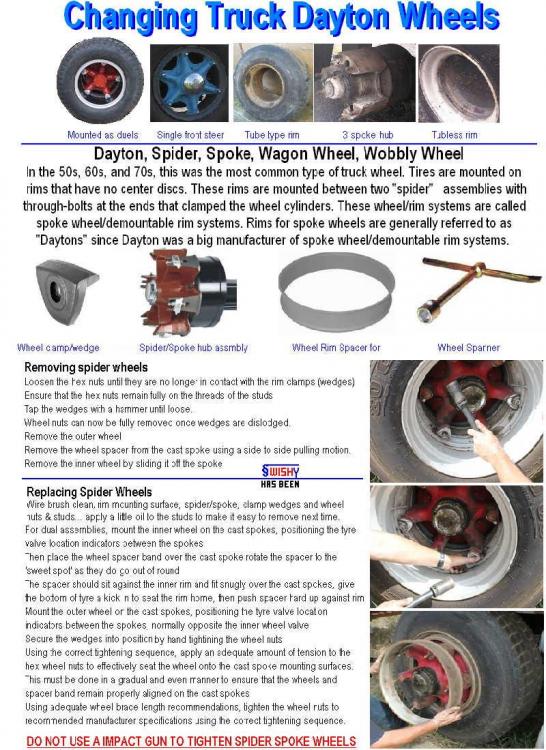 They must be strong, balanced, with consistent dimensions. If you "do not guess" with the dimensions, then in the end the disks can touch the suspension, the wing, the brake caliper ... All this can lead to damage not only to the disks, but also to the elements adjacent to them.
They must be strong, balanced, with consistent dimensions. If you "do not guess" with the dimensions, then in the end the disks can touch the suspension, the wing, the brake caliper ... All this can lead to damage not only to the disks, but also to the elements adjacent to them.
Therefore, the selection of discs must be taken responsibly. Let's start with the sizes of wheels (discs) used for cars. This is the first thing to start with.
Diameter and width (disc size) is the first important parameter that determines the external dimensions of the disk (diameter of the disk and its width), and, accordingly, the possibility of installing it on a particular car. This is due to the fact that, as a rule, for each car model, the manufacturer provides disks of its own size.
Dimensions are indicated as follows: 5 x 13; 6 x 14; 6.5 x 15, and so on (standard row of discs) or vice versa. Let's say 13*5, 14*6, 15*6.5... Read like this: "five by thirteen", "six by fourteen", "six and a half by fifteen".
Let's say 13*5, 14*6, 15*6.5... Read like this: "five by thirteen", "six by fourteen", "six and a half by fifteen".
The smaller number can be 4, 4.5, 5, 5.5, …10 and represents the width of the rim in inches . The larger number 12, 13, 14, ... 22 indicates the diameter of the disc rim in inches .
For example, on VAZ "classic" cars, it is necessary to install disks of the following sizes: 5 x 13 or 5.5 x 13, that is, 13 inches in diameter and 5 or 5.5 inches wide. On VAZ cars of the eighth and tenth families (with front-wheel drive), in addition to the "thirteenth" disks, you can also install disks sized 5.5 x 14 and 6 x 14, and with a low-profile tire and "fifteenth" disks sized 6x15 or 6.5x15. With one "but" that 15-inch wheels are not approved for use by the manufacturer and you may have problems passing a technical inspection, but there is the possibility of installing them. This size is very important for installing tires on wheels, since they also have their own specific width and height.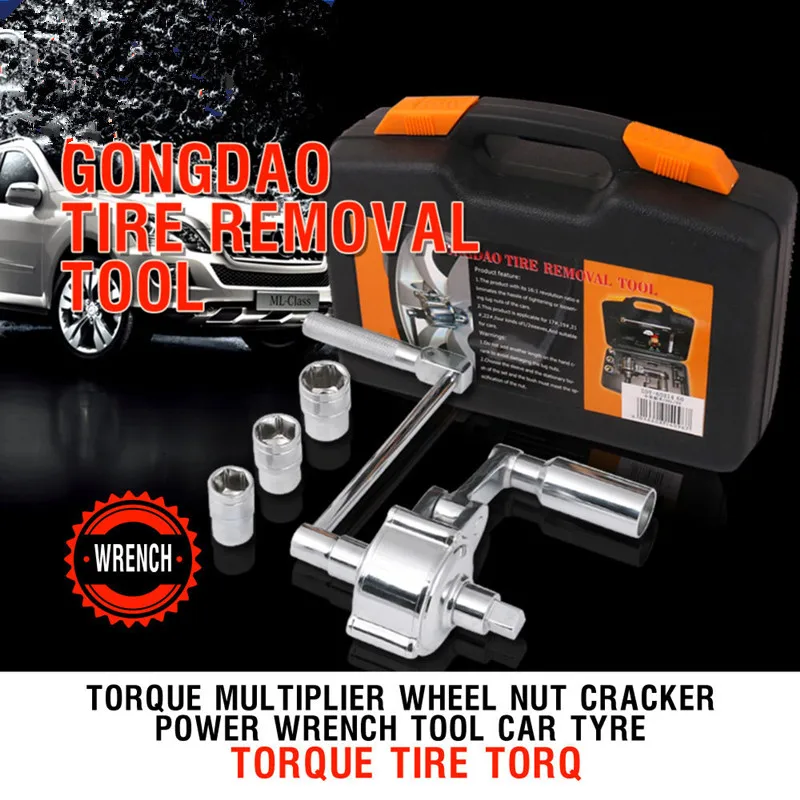 Not every tire will fit the rim you have. For more information about the characteristics and sizes of tires can be found in the "Tyre sizes and markings" section.
Not every tire will fit the rim you have. For more information about the characteristics and sizes of tires can be found in the "Tyre sizes and markings" section.
However, when choosing a wheel, it is very important to consider that the size of the wheel is a necessary, but far from insufficient and final parameter. There are other equally important parameters.
Wheel offset (ET) is the distance in millimeters between the mating plane of the disc when installed on the vehicle hub and the conditional plane passing through the middle of the disc rim. (Diameter, width and offset)
The disc offset can be "positive" (diagram "overhang+"), if the mating plane does not go beyond the imaginary plane. In this case, for the installed wheel, most of the rim will be "drowned" inside the car arch, visually it will seem that the disk is recessed in the arch. The offset of the disk can be "zero" if the mating and imaginary plane in the center of the disk rim coincide with each other.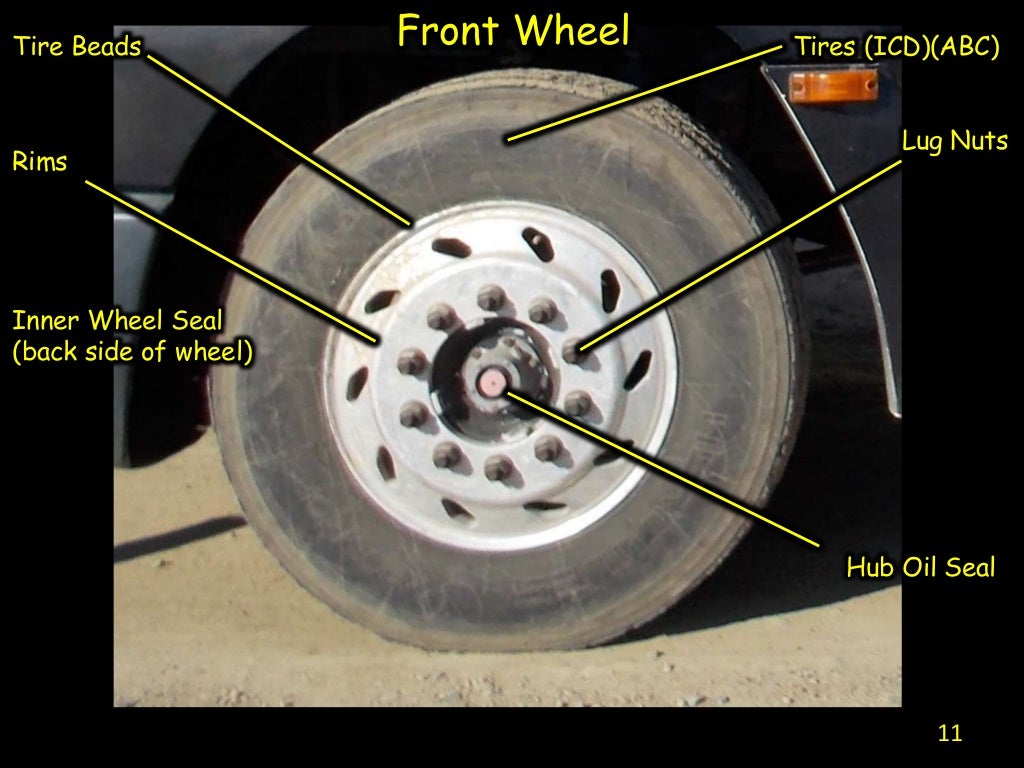 The offset of the disc can be "negative" (in the figure "departure-") if the mating plane is closer to the center of the car than the imaginary plane in the center of the disc rim. In this case, it is visually striking that the seat is deeply recessed inside the disk, and the disk itself seems to be protruding outwards.
The offset of the disc can be "negative" (in the figure "departure-") if the mating plane is closer to the center of the car than the imaginary plane in the center of the disc rim. In this case, it is visually striking that the seat is deeply recessed inside the disk, and the disk itself seems to be protruding outwards.
To determine the wheel offset, use Figure 1. It is necessary to measure the distance "B" from the inside of the wheel. Divide the distance "X" in half, and subtract that half of "X" from "B". If the resulting difference is positive, then the overhang is "positive", if negative, then the overhang is, respectively, "negative".
Like the wheel size, for most car models, disc offset is a strictly individual parameter, although there are exceptions. So, for example, the standard for VAZ "classic" cars is the departure value "+29", and for VAZ cars of the eighth and tenth families - "+40". At the same time, on 2108 you can put disks with an offset not only "+40", but also "+29".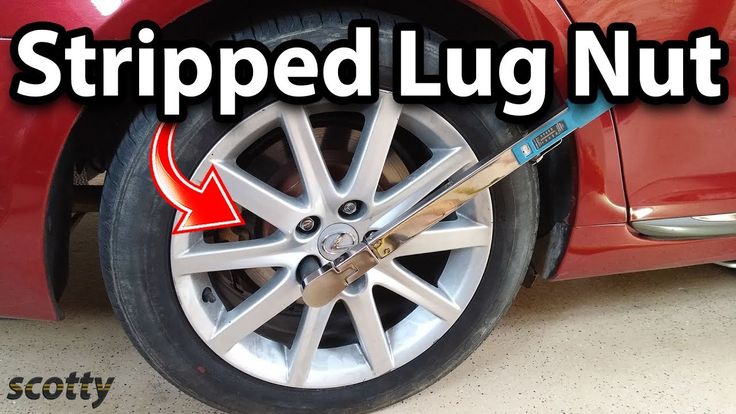 Whereas, on the contrary (on 2106 put disks with offset "+40") - it will not work anymore. Since these disks will touch the car body. There is such a rule: there is a high probability of successfully installing a disk on a car with an offset that is less than necessary than a disk whose offset is larger than the standard one. In this case, the disc will protrude outward and the only thing that can prevent its installation is the arch of the car body.0055 This criterion for installing disks with a "native" offset is very important for cars of the tenth family, since due to the specific rear arch (rear fenders), disks with a smaller offset will touch them. Often, to install discs with a smaller offset, in this case, shock absorber spacers are used that raise the rear clearance and allow you to install these discs.
Whereas, on the contrary (on 2106 put disks with offset "+40") - it will not work anymore. Since these disks will touch the car body. There is such a rule: there is a high probability of successfully installing a disk on a car with an offset that is less than necessary than a disk whose offset is larger than the standard one. In this case, the disc will protrude outward and the only thing that can prevent its installation is the arch of the car body.0055 This criterion for installing disks with a "native" offset is very important for cars of the tenth family, since due to the specific rear arch (rear fenders), disks with a smaller offset will touch them. Often, to install discs with a smaller offset, in this case, shock absorber spacers are used that raise the rear clearance and allow you to install these discs.
In general, it is considered quite acceptable if the offset value fluctuates within ± 5 mm. from standard.
But even if you have installed wheels with an offset that is not set according to the technical specifications on your car, there is one more circumstance. When changing the offset of the disk, the distance from the fulcrum of the wheel on the suspension (bearing) to the fulcrum with the ground changes. The greater this distance from the nominal distance laid down in the "native" disk, the greater the load of the resulting torque relative to the nominal value will fall on the fulcrum of the disk on the suspension (bearing). This is due to the fact that with an increased negative disc overhang, an increase in the shoulder occurs, more torque begins to be transmitted to the wheel bearing. As a result, the installation of these disks can entail not only a change in the vehicle's handling (with a smaller reach, better cornering stability due to an increase in the track width and vice versa), but also a greater load on the bearings and suspension elements and, as a result, their shorter life during the operation of the machine.
When changing the offset of the disk, the distance from the fulcrum of the wheel on the suspension (bearing) to the fulcrum with the ground changes. The greater this distance from the nominal distance laid down in the "native" disk, the greater the load of the resulting torque relative to the nominal value will fall on the fulcrum of the disk on the suspension (bearing). This is due to the fact that with an increased negative disc overhang, an increase in the shoulder occurs, more torque begins to be transmitted to the wheel bearing. As a result, the installation of these disks can entail not only a change in the vehicle's handling (with a smaller reach, better cornering stability due to an increase in the track width and vice versa), but also a greater load on the bearings and suspension elements and, as a result, their shorter life during the operation of the machine.
And one more important note. The parameter "departure" of the wheel must be considered within its standard size.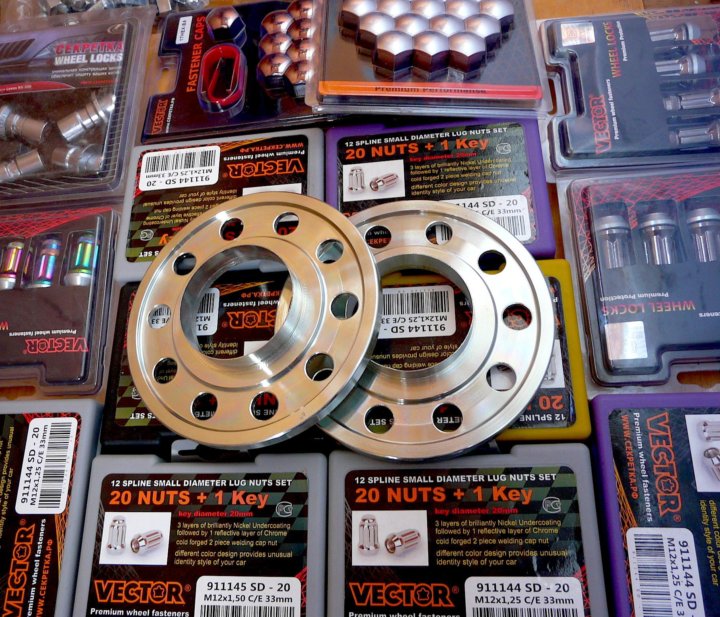 That is, the offset is "native" only strictly for a certain disk size, or rather, for a certain width. And if you decide to put wider wheels on your car, you need to take into account that in this case the offset should be less than the standard one. And vice versa: a narrower disk - a longer reach. In any case, we advise you to always seek help from qualified specialists on such issues.
That is, the offset is "native" only strictly for a certain disk size, or rather, for a certain width. And if you decide to put wider wheels on your car, you need to take into account that in this case the offset should be less than the standard one. And vice versa: a narrower disk - a longer reach. In any case, we advise you to always seek help from qualified specialists on such issues.
Even if you have chosen a disc with the right radius, width, drilling and overhang, you can cross out the inner centering hole. This is another important parameter that you should pay special attention to. In fact, this hole provides a landing on the suspension hub and the gap between the disk and the hub should be minimal. Moreover, if the hole is small, then by itself it will not fit on the hub. If it is large, then you can correct it by installing centering rings. Usually these are such plastic rings inserted into the disk.
However, most manufacturers have their own preferred row for internal hub mounting holes. Here are a few examples: for Toyota, let's say in most cases it is 60.1 mm, for Nissan and Renault 66.1.
Here are a few examples: for Toyota, let's say in most cases it is 60.1 mm, for Nissan and Renault 66.1.
That is, we can conclude that if you put the ring,
, then, subject to all other sizes, a wheel with Renault will fit on Toyota, but with Toyota on Renault no longer. If only to squander this CO.
The characteristic PCD (Pitch Circle Diameter) indicates the diameter of the centers of the mounting holes and is measured in millimeters. Also indicates the number of studs or bolts needed to attach the disc to the hub. In the case of 4 vehicle mounting holes, this is the distance between the centers of two diametrically opposed holes. Drilling holes for nuts and bolts in the discs is carried out according to two parameters. The diameter on which the holes are located and the size between the holes. One value is directly related to the other and depends on the number of holes for mounting the disk. In the picture below you can see the indicator of this ratio depending on the number of holes.
In the picture below you can see the indicator of this ratio depending on the number of holes.
Hole sizes for bolts and nuts in discs (drilling).
But this characteristic is more applicable for manufacturers, since in fact this is an algorithm for the correct designation of performance dimensions, but for ordinary people, the standard designation PCD is the number of holes and the distance between them, for example 4 * 100 or 5 * 114.3, etc.
Mounting holes on the disk are drilled with a tolerance of plus in diameter, and you can make a mistake in choosing PCD if it differs from the standard one by 1-2 mm. For example, a PCD9 wheel can be put on a PCD100/4 hub8/4 (98 mm from 100 that is said to the naked eye can not be distinguished). Such a substitution is unacceptable. In this case, of all nuts (or bolts), only one will be fully tightened; the rest of the holes will be “taken away” and the fasteners will remain undertightened or tightened with a warp - the landing of the wheel on the hub will be incomplete, the disk will not adjoin the hub, which will affect its vertical deviation. When driving, such a wheel will "walk in a figure eight", in addition, incompletely tightened nuts will unscrew by themselves.
When driving, such a wheel will "walk in a figure eight", in addition, incompletely tightened nuts will unscrew by themselves.
In addition to the offset of the disc width and disc diameter, you can often find other information. The disc may contain:
- Date of manufacture. Usually a year and a week. For example: 0407 means that the disc was released after the 3rd week of 2007, that is, in the 4th week of the year.
- SAE, ISO, TUV - the stamp of the regulatory authority indicating the standard by which the disc is made. The marking indicates that the wheels comply with international rules or standards.
- MAX LOAD 2000LB - the designation of the maximum wheel load is very common (indicated in kilograms or pounds). For example, the maximum load of 2000 pounds (908kg)
- MAX PSI 50 COLD - means that the tire pressure should not exceed 50 pounds per square inch (3.5kgf / sq.cm), the word COLD (cold) reminds, that the pressure should be measured in a cold tire;
- TOYOTA - wheel manufacturer.
This paragraph can be called reference. In it you will simply find information for some car models, with standard disks used for them.
Toyota Сorolla (2002-2006) release wheels are installed in the dimension: 6J * R 15; departure - ET45; drilling holes for bolts - 4 x 100; diameter of the central hole - 54.1 Permissible deviations for the dimensions of the wheel : Offset ET 42. Only for cast and forged wheels, the central hole may differ from the regular one in a larger direction. In this case, the installation of plastic centering rings is required to compensate for the difference in size.
Toyota Corolla (2007-2018) engine 1.6 release mounted wheels in the dimension: diameter of the central hole 60.1; diameter R16; width 6.5; departure - ET 45; reaming 114.3 x 5 Tolerances for wheel dimensions : Offset ET 42. Only for cast and forged wheels, the central hole may differ from the regular one in a larger direction. In this case, the installation of plastic centering rings is required to compensate for the difference in size.
In this case, the installation of plastic centering rings is required to compensate for the difference in size.
Toyota Land Cruiser Prado (2010-2018) 2.7L 4.0L
From factory for 2.7 litre, 7.5Jx17 drilled 6/139.7 and offset ET 25 or for 4 liter version 7.5Jx18 drilled 6/139.7 offset ET 25. Nut: 12*1.5. Tires for 2.7 - 265/65 R17 or respectively for 4.0 - 265/60 R18. DIA 106.2 mm.
Toyota Yaris (2006-2010)
6J*R 15; departure - ET45; drilling holes for bolts - 4 * 100
VAZ 2101-2107 rims are installed in the dimension: 5 x 13 or 5.5 x 13; departure - ET29± 5; drilling holes for bolts - 4 x 98; diameter of the central hole - 58.1
VAZ 2110-2111-2112 (8 valve engine) wheel disks are installed in the dimension: 5.5x13; departure - ET35 + 5; drilling holes for bolts - 4 x 98; diameter of the central hole - 58.1
VAZ 2110-2111-2112 (16 valve engine) wheel disks are installed in the dimension: 6x14; departure - ET35 + 5; drilling holes for bolts - 4x98; central hole diameter - 58.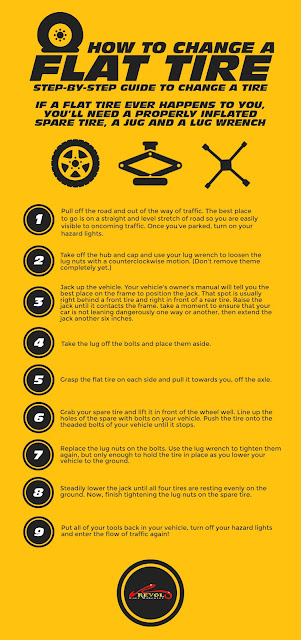 1
1
VAZ 2170 2171 2172 Lada Priora (engine 1.6) wheels are installed in the dimension: 5.5 x 14; departure - ET35 + 5; drilling holes for bolts - 4x98; diameter of the central hole - 58.6 or wheels are installed in the dimension: 6 x 14; departure - ET37 + 5; drilling holes for bolts - 4x98; diameter of the central hole - 58.6 or wheels are installed in the dimension: 6x15; departure - ET35 + 5; drilling holes for bolts - 4 x 98; central hole diameter - 58.6
VAZ Lada Kalina (engine 1.4) wheels are installed in the dimension: 5x13; departure - ET40+3/-5; drilling holes for bolts - 4 x 98; the diameter of the central hole is 58.6 or rims are installed in the dimension: 5.5x14; departure - ET37 + 5; drilling holes for bolts - 4x98; diameter of the central hole - 58.6 or wheels are installed in the dimension: 6 x 14; departure - ET35 + 5; drilling holes for bolts - 4x98; central hole diameter - 58.6
VAZ Lada Kalina (engine 1.